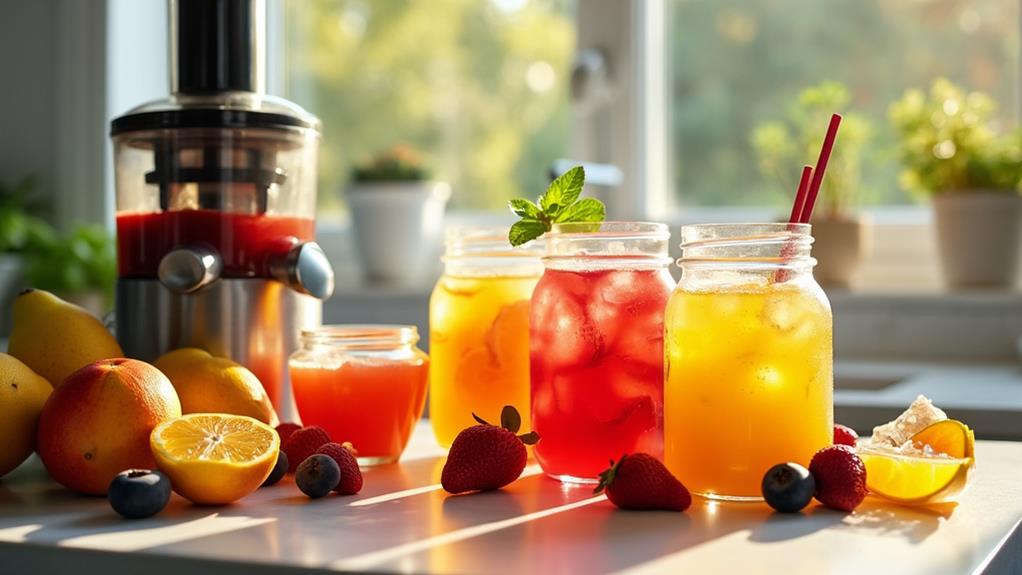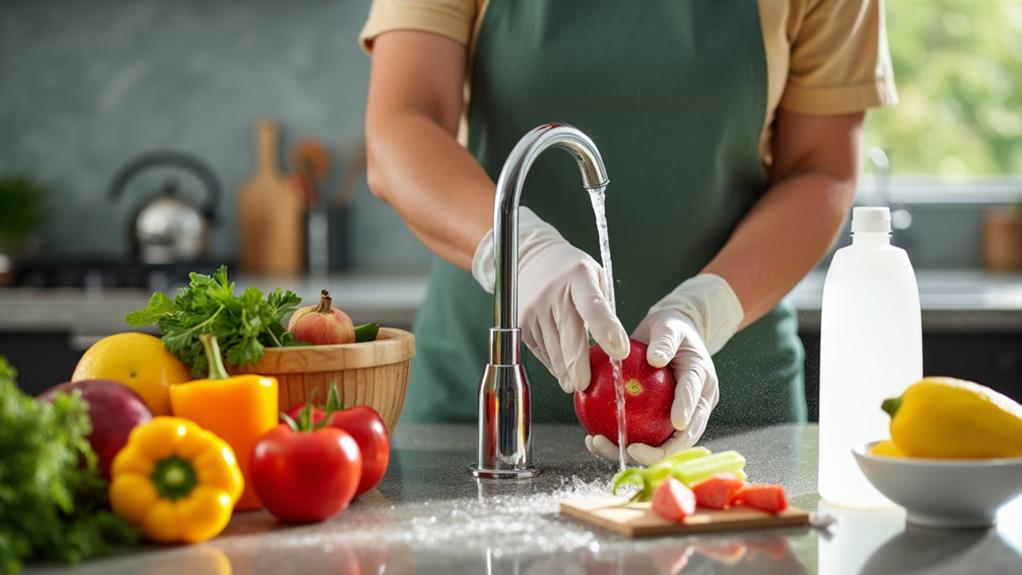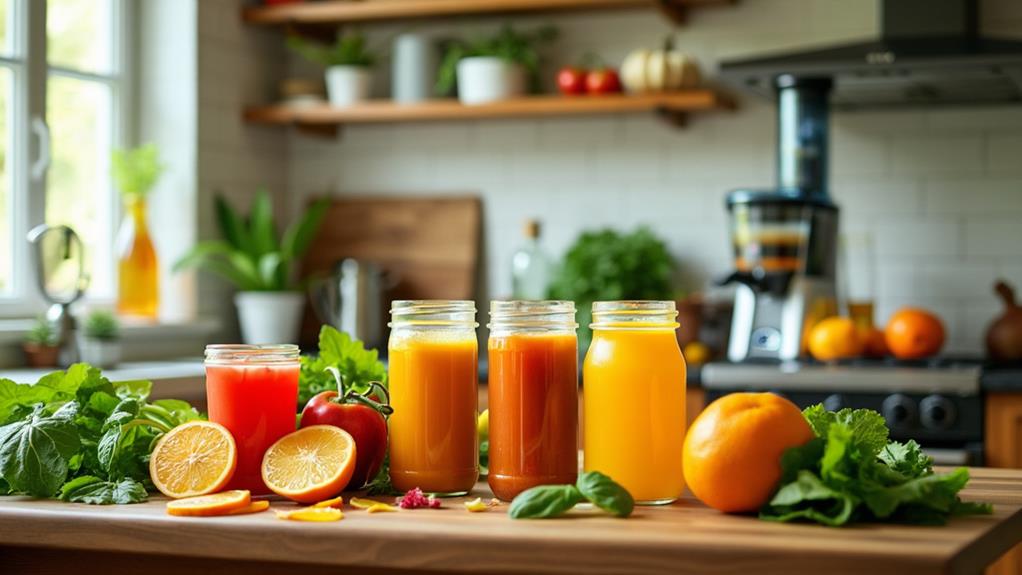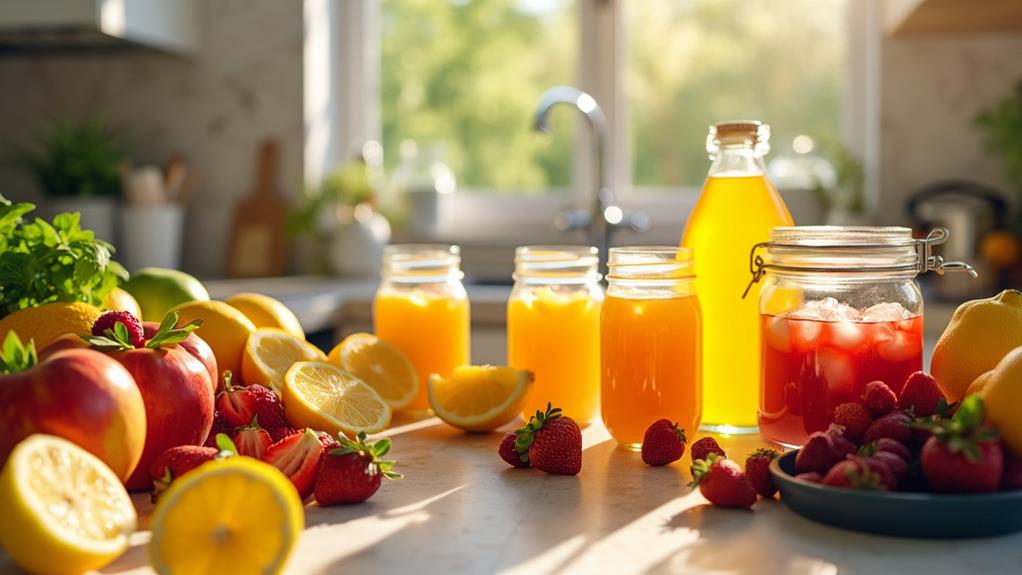Essential Vegetable Juicing Tips for Beginners
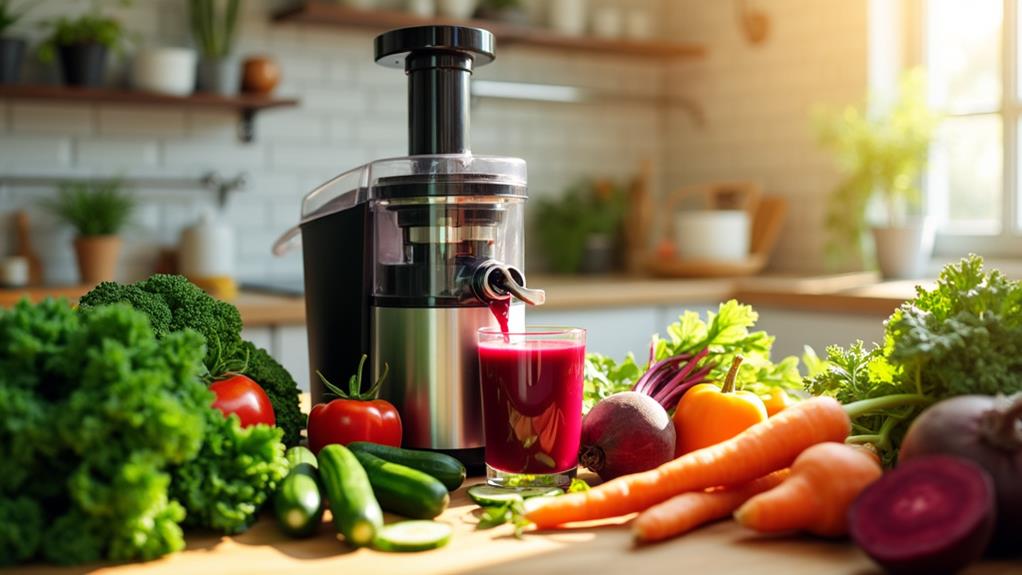
Start your juicing adventure by picking fresh, high-water veggies like cucumber and celery for better hydration. Choose colorful, nutrient-packed produce such as kale and beets to enhance vitamins and antioxidants. Get a juicer that suits your needs; masticating types retain more nutrients, while centrifugal ones work quickly. Always wash and chop your ingredients well to guarantee smooth juicing and prevent clogs. Enjoy your juices fresh to optimize benefits, or store them in airtight containers for later. Experiment with simple recipes and gradually add greens for a delicious, balanced drink. Investigate further to enrich your juicing knowledge and technique.
Selecting the Best Produce
Selecting the best produce is vital for making delicious and nutritious vegetable juice. Start by choosing fresh fruits and vegetables with high water content, like cucumbers and celery. These not only yield more juice but also improve hydration. It's smart to go for nutrient-dense options such as kale, spinach, and beets, which are packed with vitamins A, C, and K. These veggies offer significant health benefits, making your juice a powerhouse of nutrition.
Look for firm vegetables without blemishes to guarantee freshness and peak quality. Bright colors indicate higher nutrient levels and better flavor, so don't shy away from a colorful variety. Including a range of colors in your selection increases antioxidants and phytonutrients, enhancing your juice's health benefits.
When juicing root vegetables like carrots and beets, it's vital to wash them thoroughly. Peel them if necessary to remove dirt and pesticide residues, guaranteeing the juice's peak quality. These steps in selecting the best produce will not only make your juice more flavorful but also improve its nutritional value, supporting a healthier lifestyle with every sip.
Understanding Juicer Types
After picking the freshest produce for your juice, it's crucial to select the right juicer to improve flavor and nutrition. Several juicer types are available, each offering unique benefits for your vegetable juices. Centrifugal juicers operate at high speeds, perfect for quick juice extraction. However, they might compromise nutrient retention and juice yield due to oxidation. If you're after nutrient-rich juice, masticating juicers, or cold-press juicers, are a better fit. They work at slower speeds, preserving nutrients and enzymes, and the juice can last up to 72 hours in the fridge.
For those who prioritize juice yield, especially from leafy greens, twin gear juicers are ideal. They use two augers at low speeds for higher yields and excellent nutrient retention. Keep in mind they're heavier and more challenging to clean. If citrus is your main focus, citrus juicers, available in both manual and electric options, provide a convenient solution.
When choosing a juicer, consider factors like cleaning ease, versatility with different ingredients, and the feeding chute size. A larger feeding chute accommodates bigger vegetable pieces, saving you prep time. Pick a juicer that fits your lifestyle and juicing goals.
Mastering Juicing Techniques
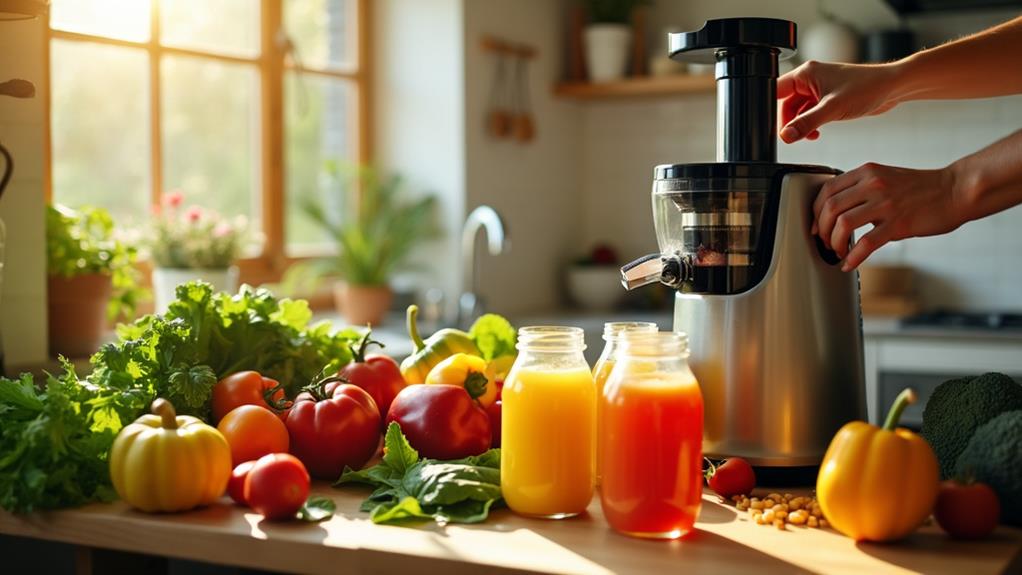
Juicing mastery begins with understanding the order and preparation of your ingredients. Start your juicing process with small, hard vegetables like ginger or berries to guarantee the best extraction. These pack a flavorful punch and set the stage for high water content vegetables and fruits, elevating flavor and yield. Always scrub your produce thoroughly to remove dirt and pesticides. For tough-skinned items like citrus and melons, peeling is key to maximizing juice quality.
Chop your produce into sizes that fit your juicer's feed chute smoothly, reducing prep time and preventing clogs. This small step guarantees the juicing process is efficient and stress-free. Once you've made your fresh juices, drink them right away to capture the full nutritional benefits. The fresher your juice, the better it is for you.
Experiment with juice recipes by starting with familiar flavors. As you gain confidence, incorporate detoxifying leafy greens like kale or spinach. This not only diversifies nutrient intake but also improves your juicing repertoire. Don't forget cleaning; run water through your juicer immediately after use, and disassemble components promptly. This helps prevent residue buildup and guarantees your equipment is ready for the next juicing session.
Storing Your Fresh Juice
Once you've crafted your fresh juices, the next step is guaranteeing they stay delicious and nutritious. Properly storing your juice can help maintain its flavor and nutritional benefits. To start, use airtight glass containers, which are essential for minimizing oxidation and preserving ideal freshness.
Here's a simple guide to storing your vegetable juice:
- Fill containers to the brim: When storing juice, make certain to fill your containers completely. This limits air exposure, which can degrade the juice's quality and reduce nutrient retention over time.
- Refrigerate promptly: Cold-pressed vegetable juice can last up to 72 hours when refrigerated, but most other fresh juices should be consumed within 24 hours. This guarantees you're getting the most out of their nutrient levels and flavor.
- Use natural preservatives: Incorporating a splash of lemon juice can help extend shelf life. Lemon juice has natural preservative properties that combat oxidation, adding an extra layer of protection to your fresh juices.
Avoid freezing unless necessary, as it can alter the juice's texture and taste. By following these tips, your vegetable juice will retain its ideal freshness and delightful flavor longer, providing you with the best possible nutritional benefits.
Exploring Simple Recipes
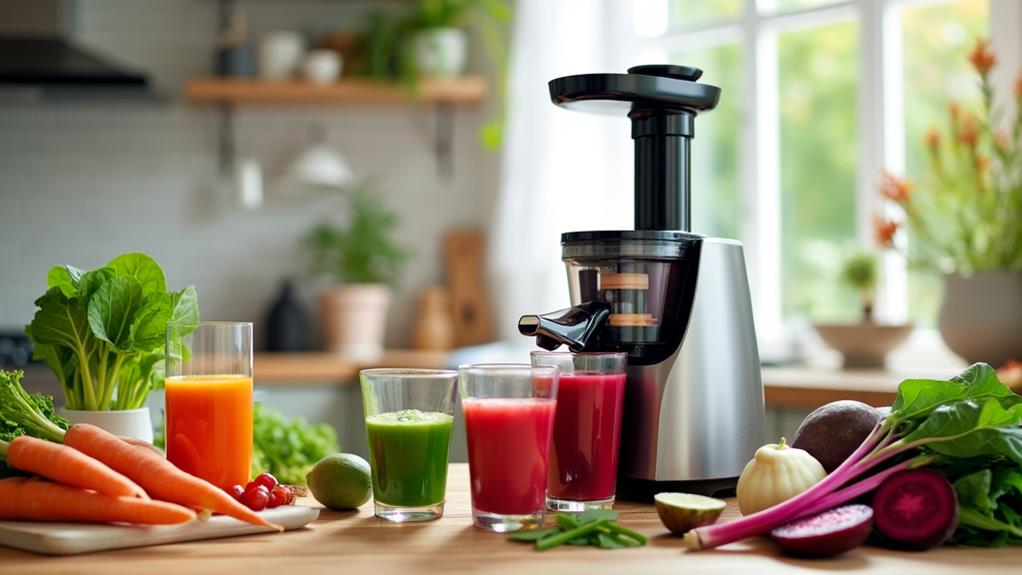
Regarding exploring simple vegetable juice recipes, starting with high-water content vegetables like cucumber and celery will guarantee a revitalizing and hydrating base. These vegetables yield more juice, making them perfect for beginners. Once you've got your base, consider enhancing your green juice with leafy greens like spinach or kale. They pair beautifully with sweeter vegetables such as carrots or beets, balancing flavors while increasing nutrient intake.
Don't be afraid to experiment with small amounts of ginger or turmeric in your recipes. These not only add a delightful kick to your juice but also offer anti-inflammatory benefits, making your drink both tasty and health-enhancing. A popular recipe to try is the "Green Goddess Juice." This invigorating blend includes kale, cucumber, green apple, lemon, and ginger, creating a detoxifying and nutrient-rich beverage that's perfect for any time of day.
As you become more comfortable with juicing, remember to taste your juice before serving. Small adjustments in ingredient ratios can greatly alter the flavor profile, ensuring you craft a juice that suits your palate perfectly. These simple tips will help you create delicious and nourishing juices.

